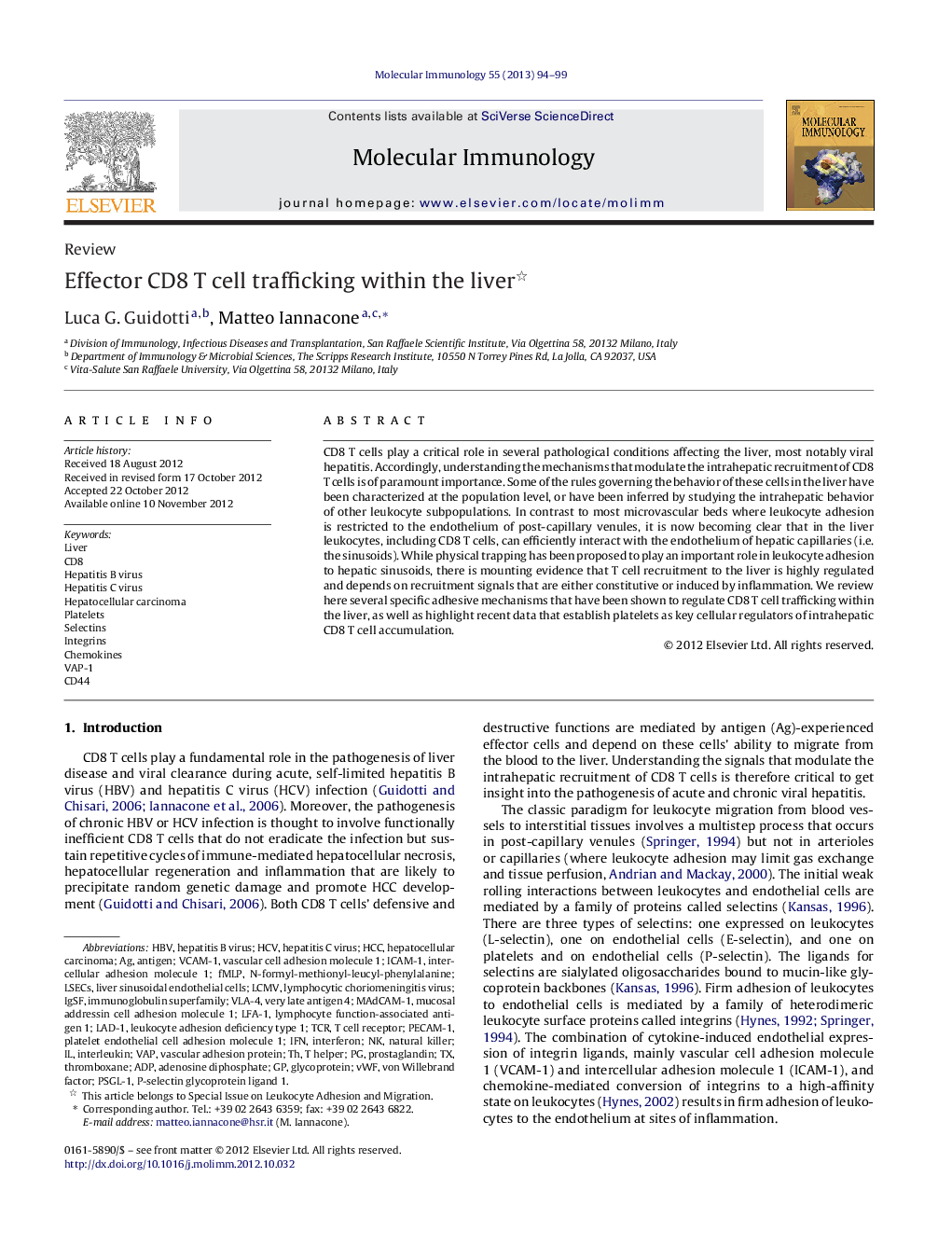| Article ID | Journal | Published Year | Pages | File Type |
|---|---|---|---|---|
| 2830909 | Molecular Immunology | 2013 | 6 Pages |
CD8 T cells play a critical role in several pathological conditions affecting the liver, most notably viral hepatitis. Accordingly, understanding the mechanisms that modulate the intrahepatic recruitment of CD8 T cells is of paramount importance. Some of the rules governing the behavior of these cells in the liver have been characterized at the population level, or have been inferred by studying the intrahepatic behavior of other leukocyte subpopulations. In contrast to most microvascular beds where leukocyte adhesion is restricted to the endothelium of post-capillary venules, it is now becoming clear that in the liver leukocytes, including CD8 T cells, can efficiently interact with the endothelium of hepatic capillaries (i.e. the sinusoids). While physical trapping has been proposed to play an important role in leukocyte adhesion to hepatic sinusoids, there is mounting evidence that T cell recruitment to the liver is highly regulated and depends on recruitment signals that are either constitutive or induced by inflammation. We review here several specific adhesive mechanisms that have been shown to regulate CD8 T cell trafficking within the liver, as well as highlight recent data that establish platelets as key cellular regulators of intrahepatic CD8 T cell accumulation.
► In addition to postcapillary venules, CD8 T cells adhere to liver sinusoids. ► Integrins and chemokines, not selectins, contribute to CD8 T cell adhesion. ► Platelets are key cellular regulators of intrahepatic CD8 T cell accumulation.
